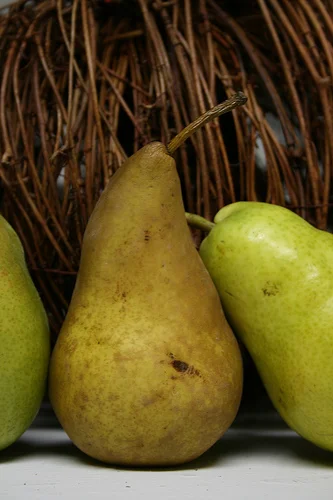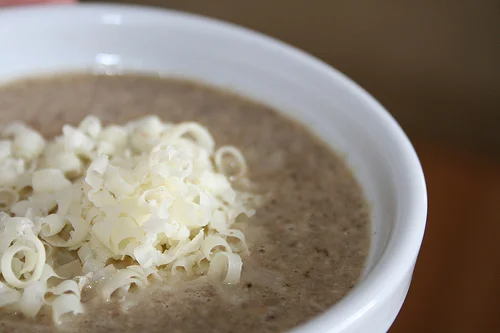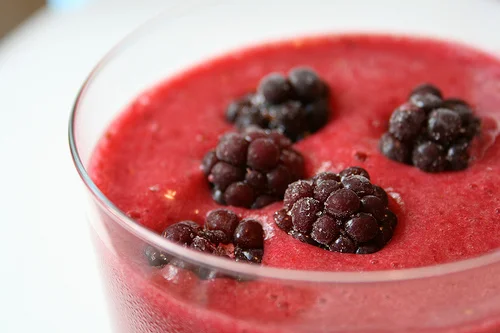taste test: apples and pears
Now THIS is what I call culinary school. Really, it should involve palate education. And not just eat what you cook, and cook what you eat. I mean, roll up your sleeves, close your eyes and chew. Take off the labels, inhale the aromas, chew chew chew.
I am in a class right now that is all about product variances. Think of it as ingredients 101, learning about what is available on the market, making educated decisions about food orders, comprehending food costs. One important factor is familiarity. Knowing one pear from the next, different brands of apples, developing an opinion on the vast complexities and differences among olive oils. One should be familiar with herbs and spices, have an opinion about piles upon piles of cheese and be schooled in all cuts of poultry and meat.
To myself, I think, this is going to take a lifetime. And I aim to enjoy, deliberately, the motion of my jaw going up and down, and the flavors swirling around all edges of my mouth for the duration. I will press my eyes shut and concentrate on flavors, settling into their layers. I will form my opinions, and my palate will have its say.
And folks, you don' t need to go to culinary school to do the same.
Tonight's class, for example, we discussed fresh produce. Now, there is a lot to know about produce that is very specific for running and opening a restaurant (consider yourself lucky you if you are not: no need to worry about yields and margins and edible portion and computing how many bunches of parsley you have to order, or how many portions come from from 30 cups of chopped tomatoes, without the seeds or skins). You don't need to figure out how many pears in a box and if you want each one individually wrapped, or what grade of tomatoes you need for salad garnishing versus tomato concasse. Instead, your focus on produce is between you and your kitchen---it is about becoming intimate with your ingredients. Then you will be armed like the best of them.
Restaurant opening aside, familiarity with produce starts in your mouth. Think wine tasting applied to [insert food to for tasting here]. For my last class this meant apples a pears. Go buy 5 different varieties. Write down their names, slice them all at once and compare. Take each one in, aroma, flavor, size; then write down their names, and take notes. Put a party around it, or don't. Have a pear party (oh, and make a cocktail with pear brandy, it is lovely) or an apple party, or simply offer a special tasting to your family as a memorable diversion. Chances are, they will enjoy it.
For class we taste-tested:
Apples Honeycrisp Aurora Fuji Golden Delicious Roma
Pears Bosc Bartlett Red Bartlett D 'Anjou
Think color, texture, mealy, tart, sweet, crisp, mature, mellow... add on your own... notes of honey, hints of citrus... tastes overripe. Nasty like smelly socks. Reminds me of smoky cheddar cheese. You get the idea. For fun, I ranked them in order of preference (My favorite apple was honey crisp and my favorite pears were Bosc and Red Bartlett). You be the judge; its your palate.
A final note. The Chef also provide two emails for reference, which you might enjoy:






